The Best Car Tech: Family Crossovers and Compact SUVs
These days, in-car tech is more than just Bluetooth.
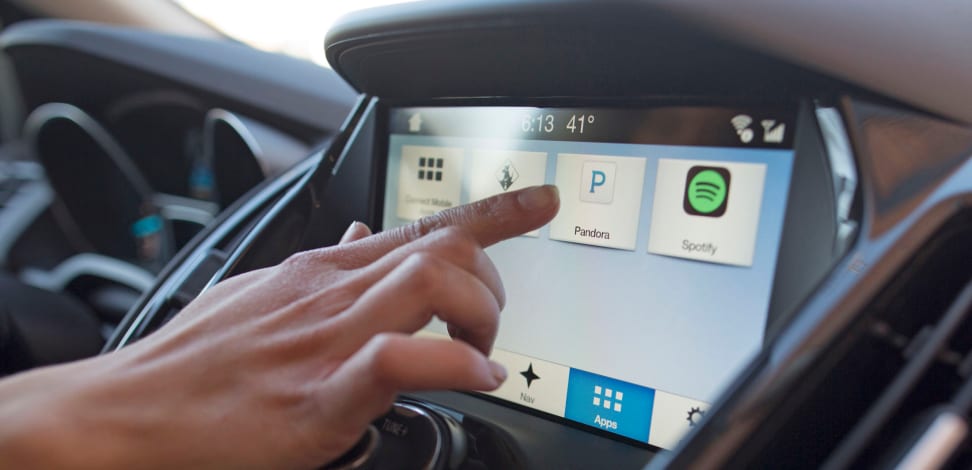 Credit:
Ford
Credit:
Ford
Recommendations are independently chosen by Reviewed's editors. Purchases made through the links below may earn us and our publishing partners a commission.
If you’re one of the millions of Americans in the market for a compact SUV or crossover, you’ve probably noticed just how competitive the marketplace has become. That’s good news for consumers—with so many great, affordable options out there, carmakers can’t get away with building a lousy small SUV.
That leaves in-car technology as one of the few differentiators between the best and the rest. Tech has come a long way in the past five years—features like Bluetooth, rear-view cameras, and blind spot detection are all but expected. But today’s family vehicles can also have extras that even luxury cars didn’t offer in the recent past—like automatic braking, or compatibility with music streaming services that put millions of songs at your fingertips.
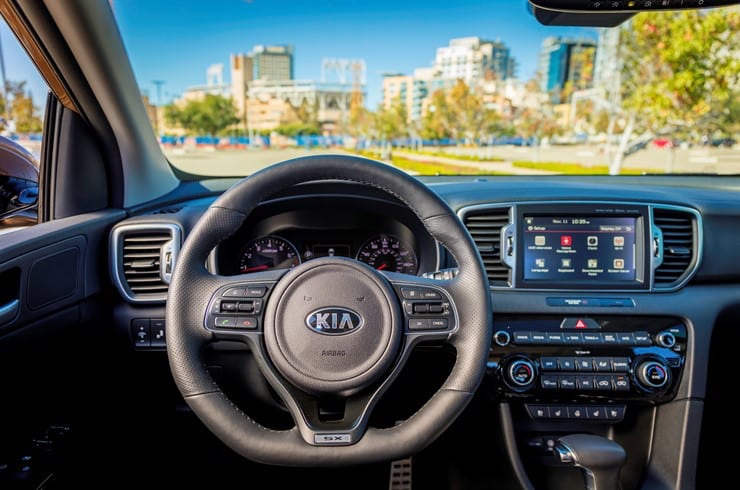
Even in entry-level trim, the UVO 3 infotainment system (pictured) is offered on the 2017 Kia Sportage.
For the current crop of crossovers, we think that great tech means easy-to-use infotainment, seamless phone connectivity through Apple CarPlay or Android Auto, and active safety features that are competent but not intrusive. That tech should also be affordable—not bundled with other high-end options that owners might not want.
So we drove all the top compact crossovers currently on the market, spending weeks with most of the top-sellers. We pored over their spec sheets and option lists, examined safety ratings, and paired countless numbers of phones over Bluetooth. We tried CarPlay, and even took our hands off the wheel to try active safety features.
If you’re looking for the latest technology, these are the best crossovers you can buy.
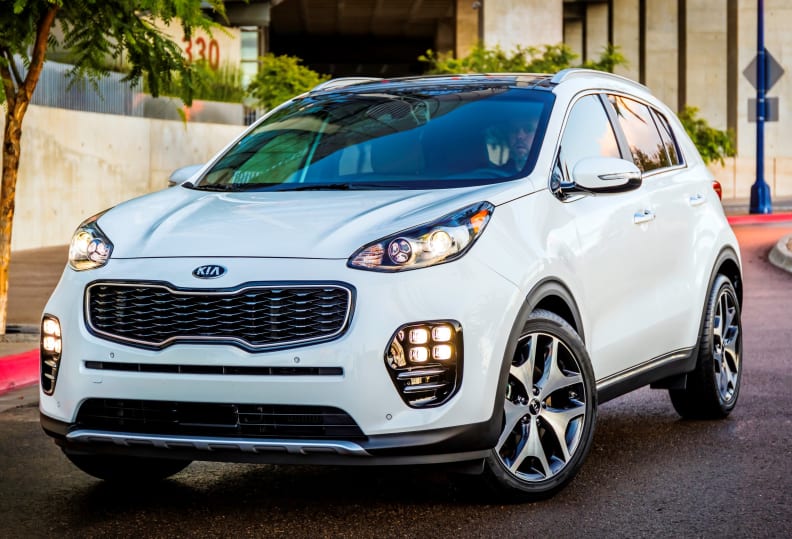
The 2017 Kia Sportage is all new, inside and out.
Best Overall: 2017 Kia Sportage
The Kia Sportage is all new for 2017, so it’s no surprise it has some advanced tech. First off, CarPlay and Android Auto work on any Sportage equipped with the UVO 3 infotainment system, which is even available on the base LX model. So optioned, a front-wheel drive Sportage will only set you back $25,885.
What we don’t like is that the Sportage hides safety features like blind spot detection along with a panoramic sunroof and a heated steering wheel in a pricey option package. It also pairs automatic braking and pedestrian detection with navigation—which is unnecessary if you plan on using CarPlay or Android Auto.
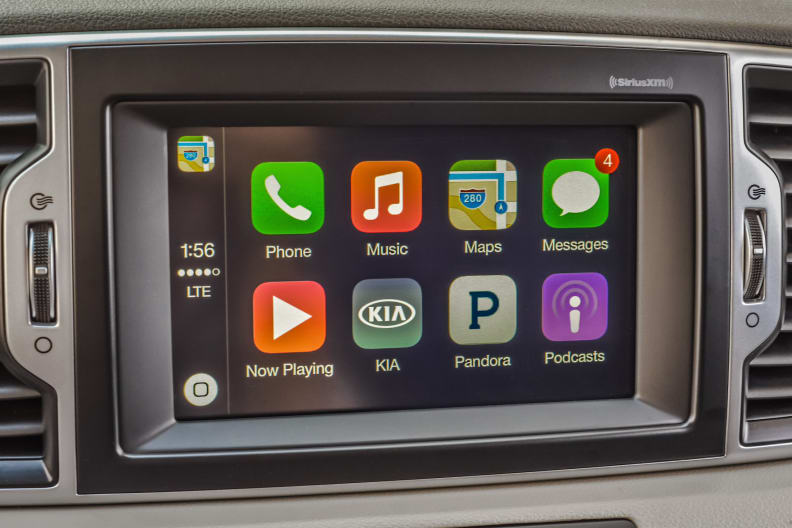
Apple CarPlay in action on a 2017 Kia Sportage
The least expensive Sportage with all safety features is the $31,490 EX with front-wheel drive, the EX Premium Package, and the EX Technology Package. That also includes a power tailgate that you can open simply by standing close to the rear of the car—even if your hands are full.
A fully-loaded SX Turbo—with the upgraded 237 hp four-cylinder turbo engine and all-wheel drive—has every safety and convenience option, and costs around $34,895. However, no matter how much money you spend, you can’t get automatic cruise control—a real pain if you frequently drive in stop-and-go traffic.
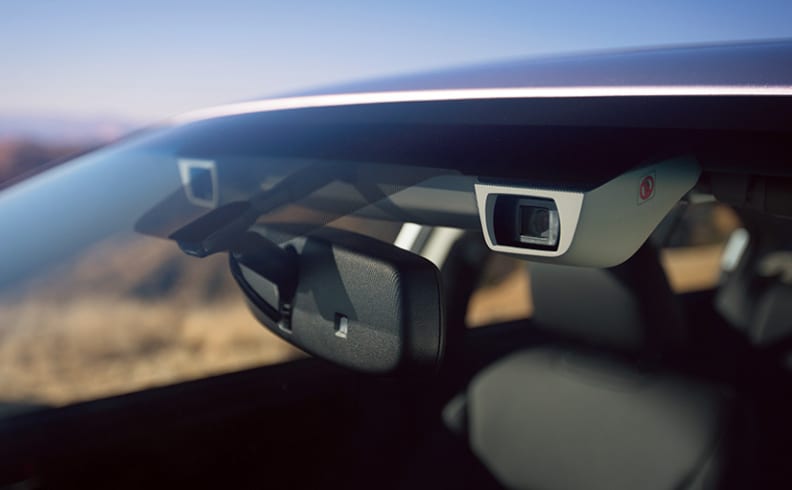
Subaru EyeSight uses cameras to monitor the road ahead, including obstacles and other vehicles.
Best Value: 2016 Subaru Forester
Our value pick comes from Subaru, which has been a pioneer in active safety ever since it debuted its camera-based EyeSight system back in 2012.
Today, EyeSight is one of the most affordable ways to get a helping hand behind the wheel—a Forester 2.5i Premium with EyeSight, including adaptive cruise control, blind spot warning, and cross-traffic detection costs just $28,565. That’s for a car with all-wheel drive, too.
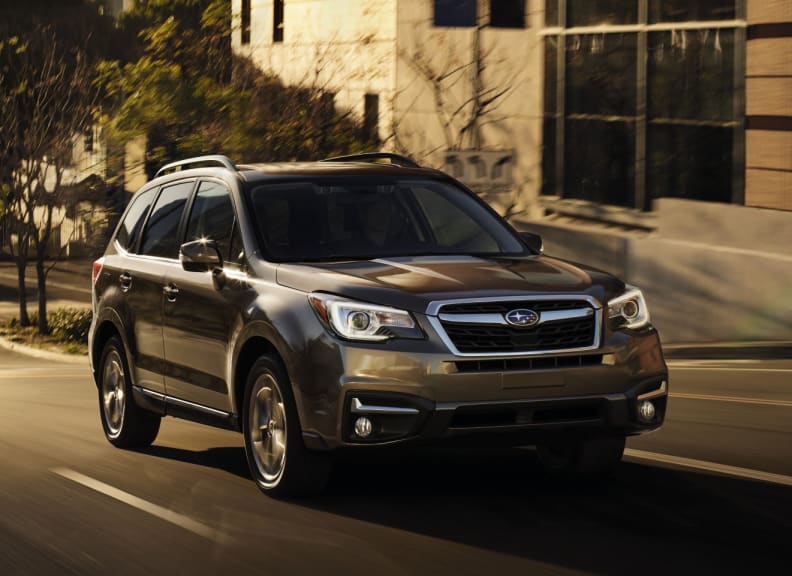
The 2016 Subaru Forester offers all-wheel drive in an affordable, tech-friendly package.
Unlike many other adaptive or automatic cruise control setups, EyeSight will work even in stop and go traffic. Just set a speed and distance, and the Forester will follow the car in front of it. You’ll still need to keep your eyes on the road—it has trouble telling when another car has cut you off—but it makes for less legwork in a traffic jam.
The Starlink navigation system can connect with services like Pandora and Aha, but it’s not as intuitive as CarPlay or Android Auto. Still, if it’s just safety you’re after, the Subaru is a great pick—the Insurance Institute for Highway Safety (IIHS) gives top marks to its automatic braking system, which can fully stop the car at both high and low speeds.
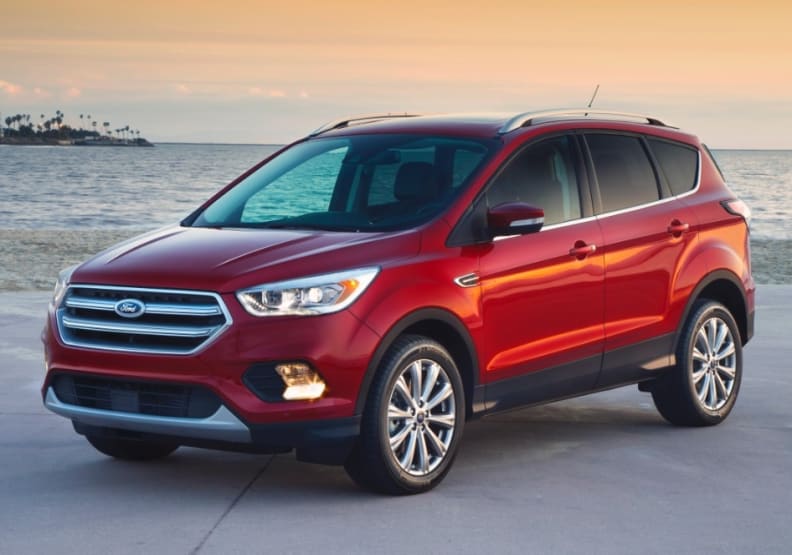
The all-new 2017 Ford Escape has everything but automatic braking.
2017 Ford Escape
The updated 2017 Ford Escape is another good pick, although it doesn’t offer an automatic braking system. That’s a serious omission, as it’s available on most of the Escape’s competitors. That’s what kept us from recommending it over the Sportage.
All 2017 Ford vehicles equipped with the updated Sync 3 infotainment system are compatible with CarPlay and Android Auto. We found Ford’s implementation easy to use, and changing between the AM/FM radio and streaming audio from a phone was simple.
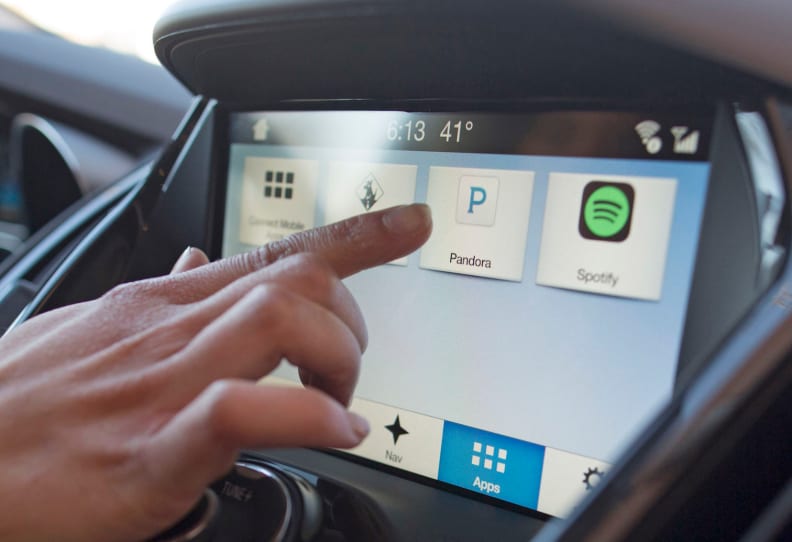
Ford's Sync 3 infotainment system is responsive, and compatible with Apple CarPlay and Android Auto.
To get Sync 3 on an Escape, you have to spend at least $26,390 for an option package on SE trim. Upgrade to Titanium trim, and you get Sync 3 standard along with all the safety options. Like the Sportage, it also adds a neat power tailgate that you can open even when your hands are full. In the Escape’s case, it opens if you wave your foot under the rear bumper.
An Adaptive Cruise Control setup that automatically follows the car in front of you in heavy traffic will set you back another $595.
Like the Sportage, its other options are nested in pricey option packages. Active safety features like lane keep assist, a driver alert system, and class-exclusive automatic parallel parking are only available in Titanium trim, and even then you have to spring for all the options. That will set you back at least $30,990 for a front-wheel drive Escape with the base,1.5L EcoBoost engine, and $34,630 for a fully-loaded all-wheel drive model with a 245 hp, 2.0L EcoBoost engine.
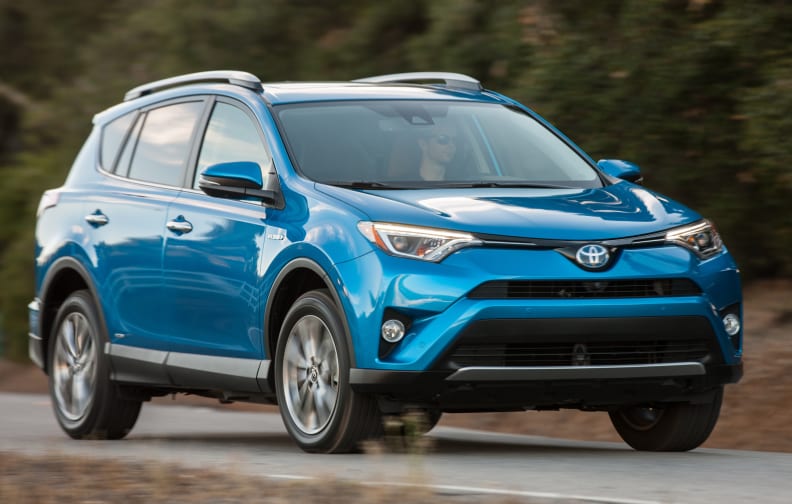
The 2016 Toyota RAV4 Hybrid comes with all the active safety and infotainment features as a fully loaded XLE, with better fuel economy and a price that's only a few hundred dollars more.
2016 Toyota RAV4
Toyota’s proprietary Entune infotainment system was cutting-edge in 2012—but technology has moved on, leaving the RAV4 without class-leading in-dash technology. Similarly, it has adaptive cruise control—but it doesn’t work in stop-and-go traffic.
Luckily, the RAV4 does a better job with safety. The IIHS awarded the Toyota crossover its highest score for automatic braking, which stopped the vehicle before a collision at both high and low speeds. Automatic braking is available in the Toyota Safety Sense package, which also includes adaptive cruise control and lane-keep assist.
To get Toyota Safety Sense, you have to add it as an option on the XLE, bringing the total price to $31,015. That’s cheaper than an Escape Titanium—but more than a Subaru Forester.
The Rest
Like the RAV4, neither the 2016 Mazda CX-5, 2016 Honda CR-V, 2016 Jeep Cherokee, nor 2016 Nissan Rogue has Android Auto or CarPlay support, but all four offer an automatic braking system. Unlike the RAV4, however, IIHS’s tests found that Mazda’s, Jeep’s and Honda’s setups could only reduce impacts at higher speeds. IIHS didn’t test the Nissan Rogue.
One note for Honda fans: The CR-V has always been a class leader, and there’s a new CR-V coming for 2017, so you may want to wait for the new version if you can.
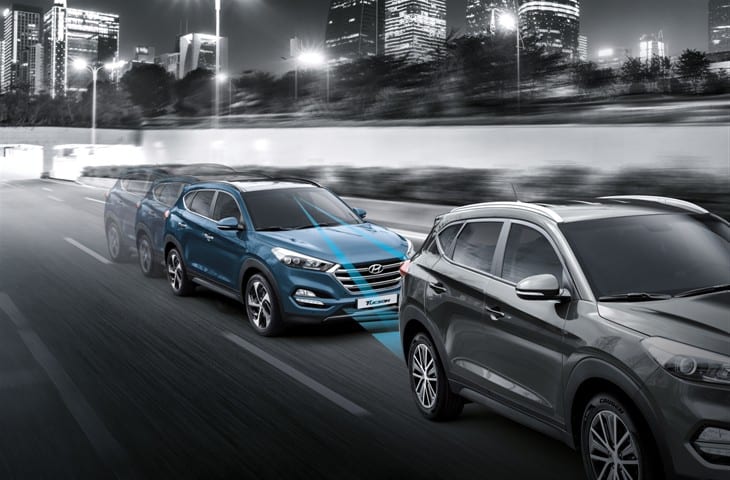
Like nearly all other small SUVs and crossovers, the Hyundai Tucson features automatic braking.
The 2016 Hyundai Tucson supports CarPlay and Android Auto as long as you pony up for the highest-end trim level. While it offers automatic braking, it lacks active lane-keep assist and automatic cruise control.
The 2016 Chevy Equinox and GMC Terrain both offer a ton of innovative tech like WiFi hotspots and extras like tablet holders for rear passengers—but aren’t on GM’s list of Android Auto or CarPlay compatible vehicles and don't offer automatic braking.
Finally, while the 2016 Mitsubishi Outlander Sport is affordable, it has a frustratingly antiquated infotainment setup and no active safety. The 2016 Volkswagen Tiguan also lacks any active safety features, and is due for a replacement.

